Composition in Vietnamese artworks is the deciding factor of success or failure of a work, where harmonious arrangement turns messy strokes into a compelling story. If you are confused because your painting lacks vitality or do not know how to balance the image, then mastering composition in art painting is the solution. This article will guide you from basic to advanced, helping you confidently create without worrying about “deviation”. Discover the definition, principles, types of composition and mistakes to avoid – all for you to apply immediately in practice.
What Is Composition In Painting? Definition And Its Important Role In Painting
What is composition in painting? It is the art of arranging elements such as lines, shapes, colors, light and dark and space in a purposeful way, to convey messages and create visual balance. Not just “arrangement”, composition in art painting is also a bridge between the artist’s ideas and the viewer’s emotions, helping the painting not to be chaotic or boring.
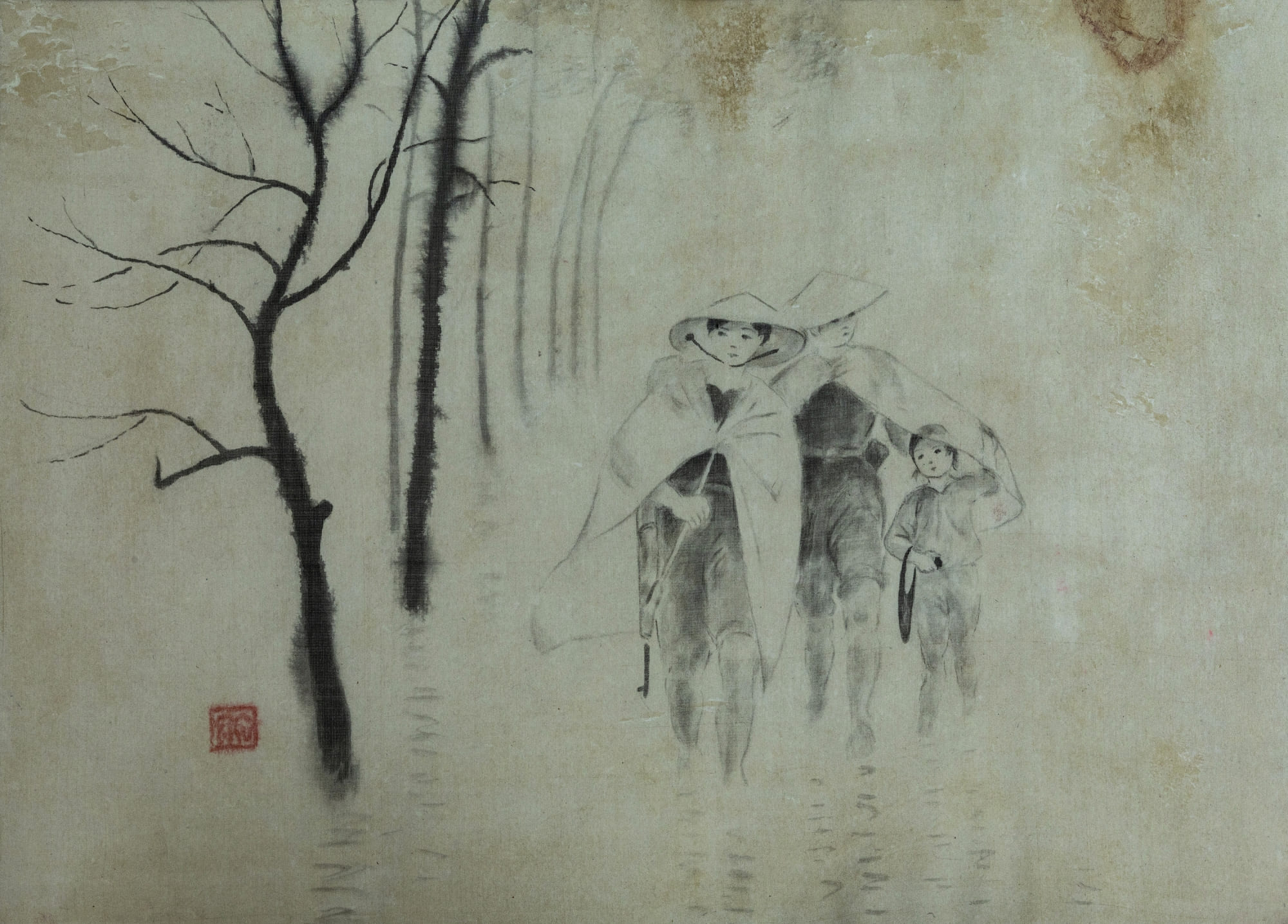
Why Does Composition in Art Determine the Success of the Work?
In painting, composition acts as a “backbone”: it guides the viewer’s eye to move logically, creates emphasis and evokes emotions. According to classical art theory, a good composition must achieve harmony, avoiding a feeling of excess or deficiency.
- Create balance: Prevent the painting from “skewing” to one side, bringing a sense of stability.
- Increase visual appeal: Use composition to lead the eye to the main subject, as in Leonardo da Vinci’s masterpiece “Mona Lisa”.
- Express artistic intention: Composition helps convey a message, from the peace of landscape paintings to the drama of abstract paintings.
Without a solid composition, the painting can easily fall into a state of “lost”, causing the viewer to quickly lose interest. In the digital age, when art spreads through social networks, a good composition also helps the work stand out more in the flow of images.
The Development History of Composition in Art Painting
Composition in art paintings has existed since ancient Egypt, with its strictly symmetrical murals. During the Renaissance, masters like Michelangelo applied linear perspective, creating depth. In Vietnam, Dong Ho paintings use simple compositions but are rich in folk meanings, proving that composition is not only a technique but also a culture.
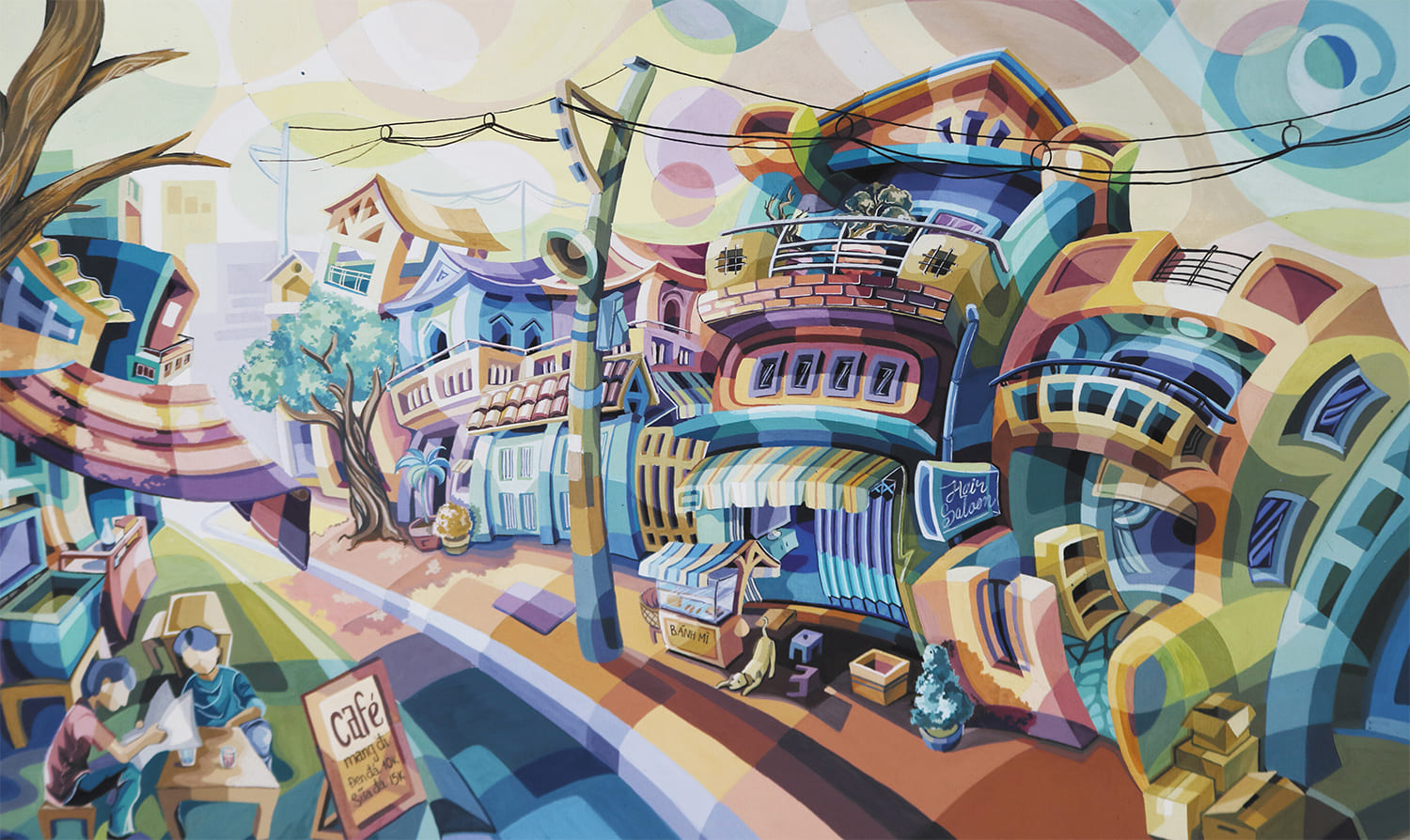
Types of Composition in Art Painting: From Basic to Advanced
Compositions in art paintings vary from classical symmetry to modern abstraction, allowing artists to express themselves flexibly. Below are the most common types, with examples to help you visualize and apply them.
Composition According to the 1/3 Ratio: The Golden Rule for Beginners
The most basic type of composition is the Rule of Thirds, which divides the frame into nine equal parts using horizontal and vertical lines. The subject is placed at the intersection points – called the “golden point” – to create a natural appeal.
- Practical application: In landscapes, place the horizon in the lower third to emphasize the sky; in portraits, place the subject’s eyes at the golden point to enhance expression.
- Famous example: Van Gogh’s “The Starry Night” uses this ratio to lead the eye from the countryside to the swirling sky.
- Benefits: Avoids boring center compositions, suitable for photography and digital painting.
The Rule of Thirds makes the painting more dynamic, especially useful for beginners to avoid the common “centering” mistake.
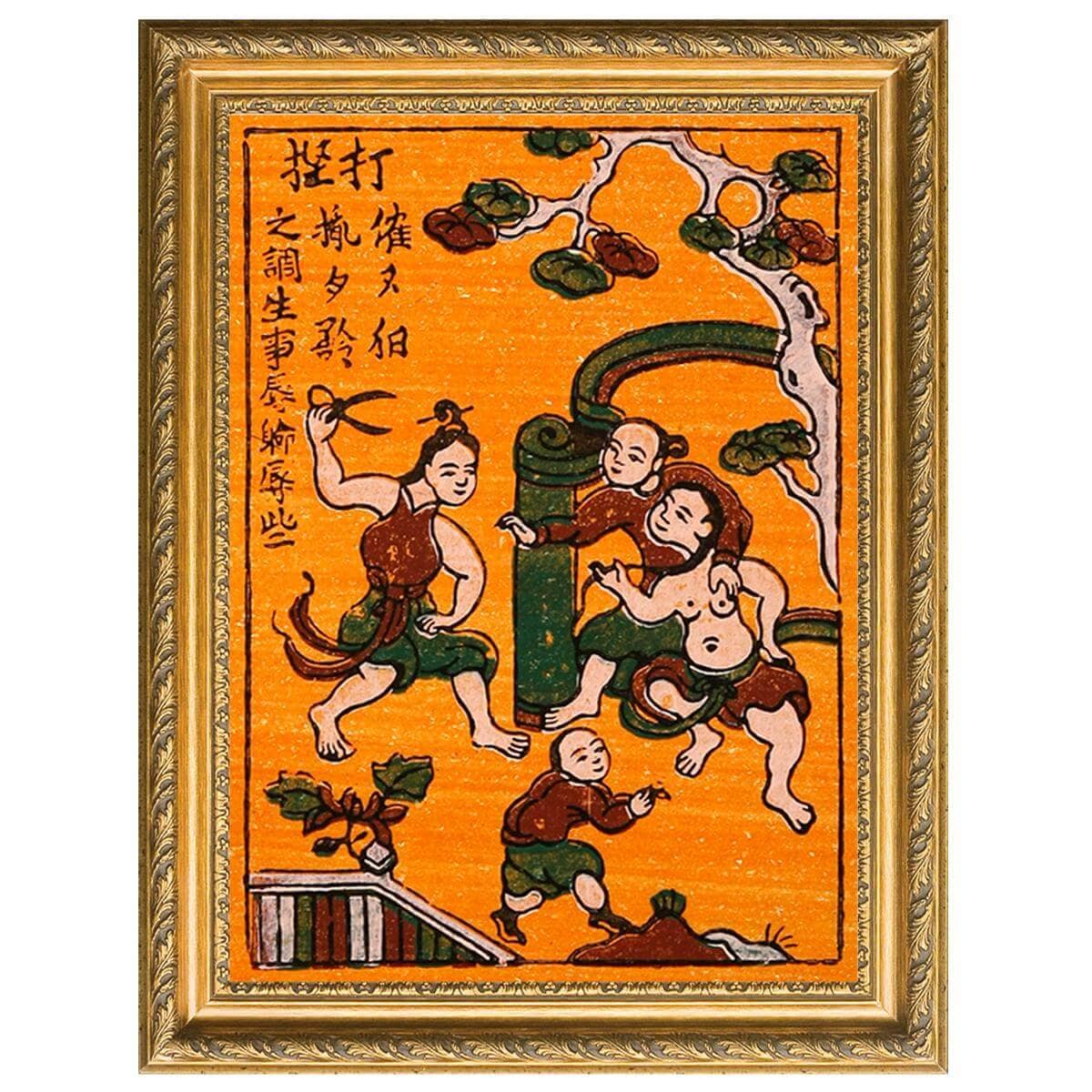
Circular Composition in Art: Creating a Sense of Softness and Fullness
Circular composition in art arranges elements along virtual circular curves, creating a smooth transition and a sense of fullness. This type is often used in paintings that symbolize happiness or nature.
- Characteristics: Main supporting elements, flowing in a circle, avoiding hard edges.
- For example, Gustav Klimt’s “The Kiss” uses an embracing circle to express love.
- Applications: Ideal for abstract paintings or illustrations, helping viewers feel harmony.
In circular composition in art, prioritize soft lines to increase emotional appeal.
The Triangle Composition in Painting: Solidity and Stability
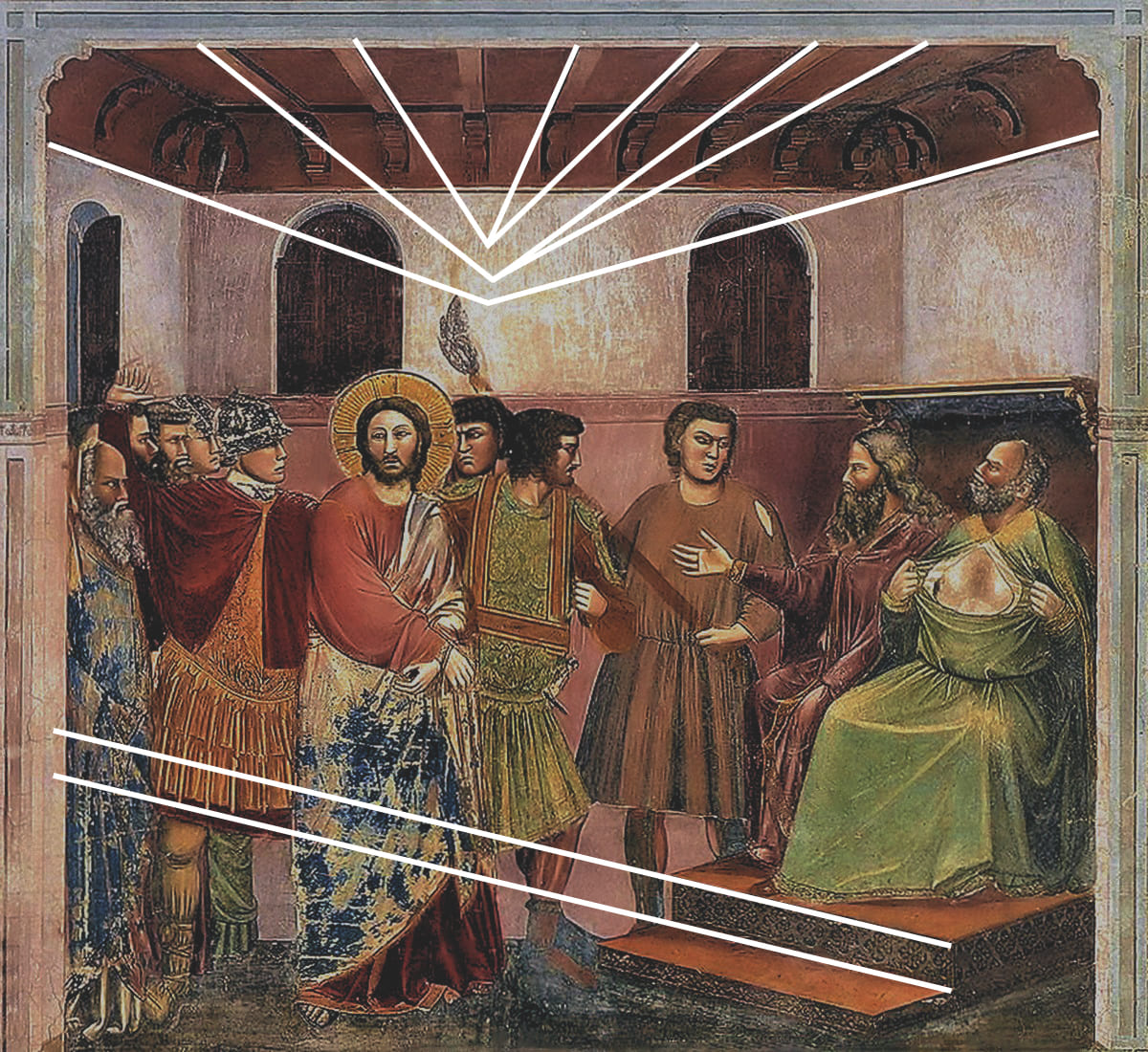
The Golden Triangle, or triangular composition in painting, creates a solid pyramid with three main points, giving a sense of stability and strength. It is a popular choice for historical or portrait paintings.
- Construction: Connect three main elements into a triangle, with the apex as the focal point.
- Classic example: Leonardo da Vinci’s “The Last Supper” uses a triangle to focus on Jesus.
- Benefits: Creates depth and strength, suitable for heroic paintings.
The triangular composition in painting is not only beautiful but also conveys a strong message, as in Vietnamese paintings about resistance.
The Golden Ratio in Painting Composition: The Natural and Perfect Secret
The golden ratio in painting composition (1:1.618) is a mystical number that appears in nature, from shells to the human body, helping the painting achieve ideal harmony.
- Simple formula: Divide the painting frame according to the Fibonacci sequence (0,1,1,2,3,5,8…), place the subject at the golden ratio division point.
- For example: “Vitruvian Man” by da Vinci illustrates this ratio perfectly.
- Modern application: In graphic design and abstract paintings, helps avoid the feeling of “dislocation”.
Use the golden ratio in painting composition to make your painting “natural” like a natural masterpiece.
Symmetrical Composition in Painting: Harmony and Solemnity
Symmetrical composition in painting divides the painting into two balanced halves, creating a sense of solemnity and stability, often used in religious or architectural paintings.
- Advantages: Easy to create, brings peace; for example: Vietnamese Dong Ho paintings with symmetrical images.
- Disadvantages: Can be boring if overused, need to add asymmetrical elements to increase vitality.
- Example: “The Arnolfini Portrait” by Jan van Eyck with perfect symmetry.
Symmetrical composition in painting is suitable for beginners, but combine to avoid monotony.
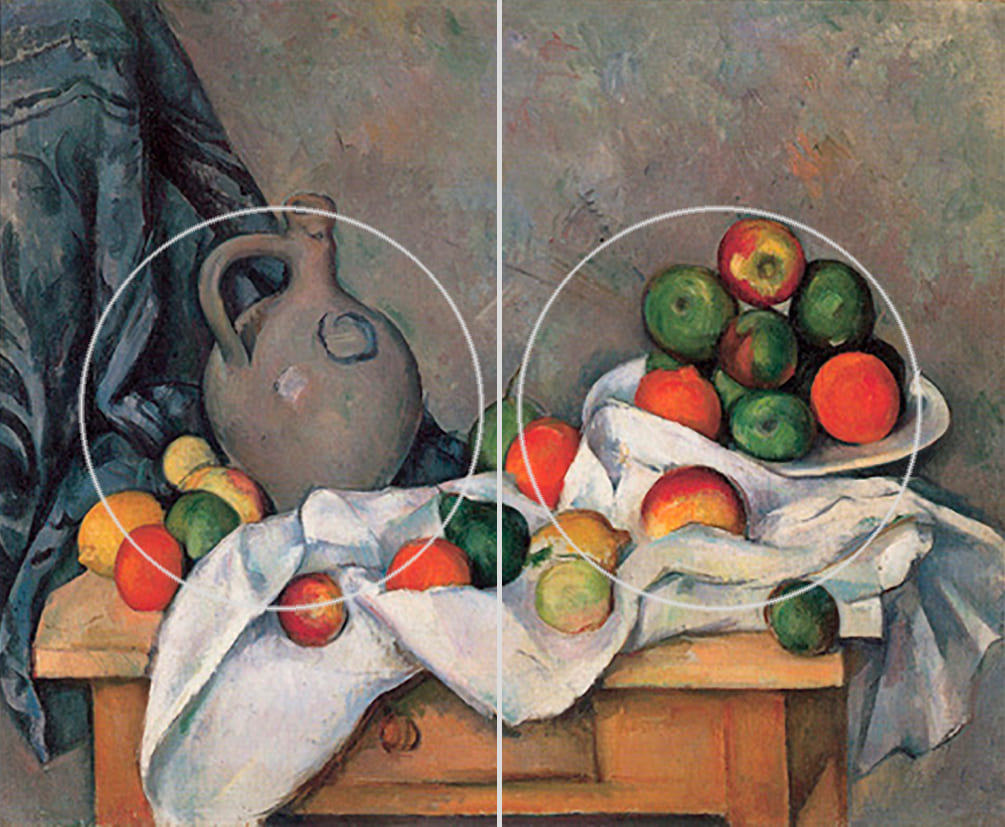
Perspective Composition in Painting: Creating Depth and Vivid Space
Perspective composition in paintings uses straight lines converging at the vanishing point, creating the illusion of depth, popular in urban landscape paintings.
- Single-point type: Used for straight streets, as in Childe Hassam’s “Avenue of the Allies”.
- Two-point type: Creates a dynamic perspective, ideal for architecture.
- Application: Combined with light and dark to increase depth, making the painting more “alive”.
Perspective composition in paintings turns the flat surface into a three-dimensional space, attracting viewers to explore.
Rules of Balance in Art Composition
The principle of balance in painting composition is the foundation, ensuring that the painting is not “skewed” visually or emotionally. Balance can be symmetrical or asymmetrical, depending on the intention.
Elements of Balance
- Color and Tone: The main color scheme is consistent throughout, avoiding strong contrasts that can be confusing.
- Shapes and blocks: Distinguish between main and secondary, with the main shape at the center or golden point.
- Lines and Textures: Smooth strokes express personal style, creating distinction.
Following the principle of balance in painting composition, experiment on scratch paper to find harmony before drawing the main drawing.

How to Apply the Principle of Balance in Practice
- Start with sketch: Divide the canvas into proportions, placing the subject first.
- Visual test: Look from a distance to detect deviations.
- Emotional integration: Balance not only form but also message, as in Kandinsky’s abstract paintings.
Points to Avoid in Painting Composition
Points to avoid in painting composition to help you avoid aesthetic “disasters”, from the horizon in the middle of the picture to repeating details.
- Horizon in the middle: Makes the picture “cut in half”, fix it by shifting up/down.
- Diagonal lines drifting out: Create a feeling of instability, keep it in the frame.
- Compression ratio: Avoid images that are too big/tight, keep the space open.
- Repeating the same: Reduce creativity, add variation for variety.
By paying attention to the points to avoid in painting composition, you will improve the quality of your work quickly.
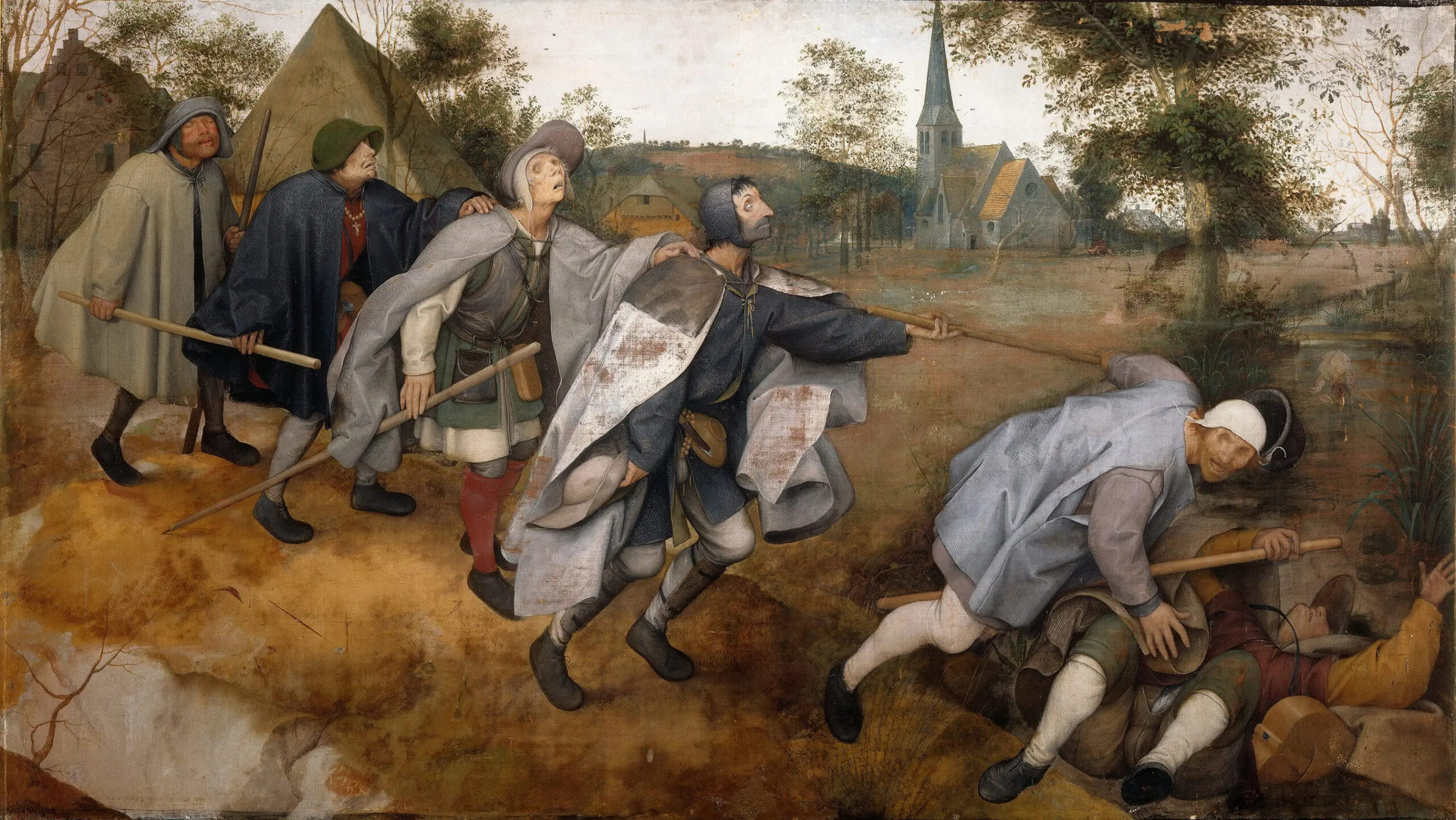
Compositional Applications in Modern Art Painting: From Traditional to Digital
In contemporary art, composition in art paintings incorporates technology: software like Photoshop applies the golden ratio automatically.
Examples From Vietnamese Painting Masters
- Dong Ho Paintings: Simple symmetrical composition, rich in folk meaning.
- Nguyen Gia Tri: Lacquer with a solid triangular composition.
- To Ngoc Van: Perspective composition creates emotional depth.
Applying composition in art paintings to turn ideas into reality, whether you are a professional or amateur artist.
In conclusion, composition in art paintings is not a rigid rule but a creative tool. Practice now to see the difference – your paintings will “speak” more!

